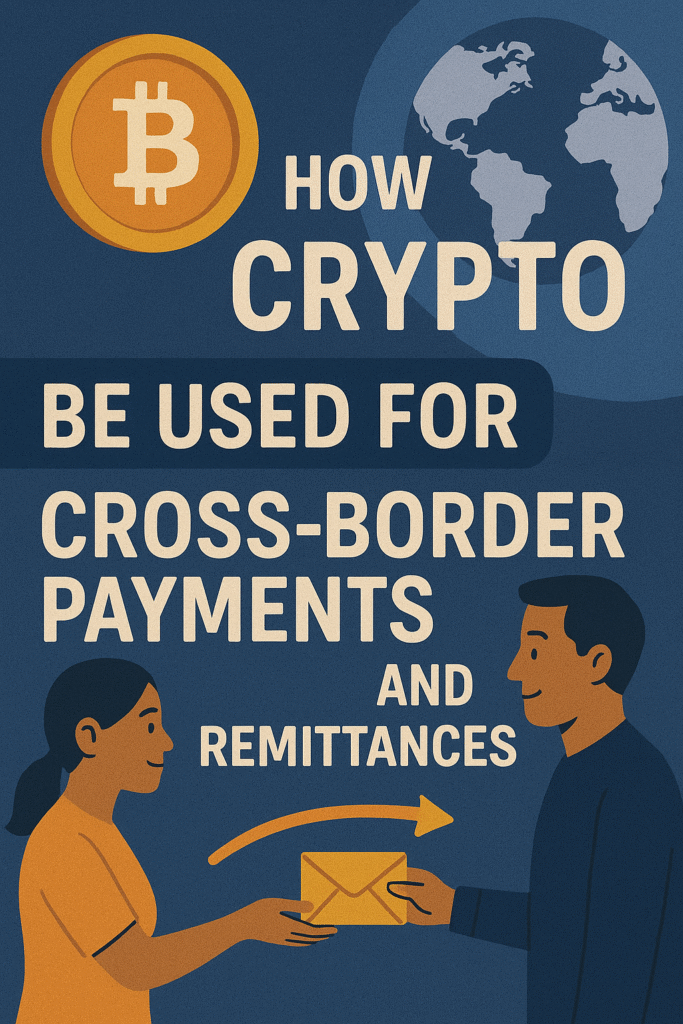For decades, international money transfers have been expensive, slow, and full of friction.
Whether you’re sending money to family abroad or paying an overseas contractor, traditional systems like SWIFT and Western Union take days to settle — often charging fees that eat into the amount being sent.
But blockchain technology is rewriting the rules.
In 2025, cryptocurrency-powered remittances are becoming a serious alternative to the outdated infrastructure of global payments — faster, cheaper, and borderless by design.
What was once a niche use case is now becoming a real-world financial revolution.
The Problem with Traditional Cross-Border Payments
Before exploring how crypto fixes the system, it’s worth understanding why the old one is so inefficient.
Sending money internationally through banks involves multiple intermediaries — correspondent banks, currency exchanges, and compliance checks.
Each one adds cost and time.
For example:
- A $300 transfer from the U.S. to the Philippines may cost $20–$30 in fees.
- The recipient might wait three to five business days to access the funds.
- Exchange rate markups can quietly reduce the amount received.
In short, the current model was designed for corporate banking, not for a globalized, digital-first economy.
And billions of people are paying the price — literally.
According to the World Bank, the average global remittance fee in 2024 was around 6.4%.
That may not sound like much, but for a worker sending half their paycheck home, it’s a painful cut.
How Crypto Changes the Game
Cryptocurrencies bypass traditional banking infrastructure entirely.
Instead of moving money through banks, they move on blockchains — digital ledgers that record transactions instantly, 24/7, across borders.
Here’s what that means for cross-border payments:
- Speed: Transactions settle in minutes, not days.
- Cost: Network fees are often under $1, regardless of amount.
- Accessibility: No need for a bank account — only a smartphone and internet connection.
- Transparency: Blockchain records are public, traceable, and tamper-proof.
For millions of unbanked individuals, this isn’t just a technical upgrade — it’s financial inclusion.
Example:
A worker in Spain can send crypto directly to their family in Mexico using a mobile wallet.
The recipient converts it to pesos instantly through a local exchange or stablecoin app — no banks, no waiting, no hidden fees.
It’s that simple.
Stablecoins: The Key to Real-World Usability
While Bitcoin and Ethereum remain popular, stablecoins are the true engine of global remittances in 2025.
Tokens like USDC, USDT, and DAI are pegged to fiat currencies (usually the U.S. dollar), eliminating volatility while preserving the efficiency of blockchain.
Stablecoins act as digital dollars, used to send value instantly and cheaply across continents.
Companies like Circle, Ripple, and Stellar are pioneering blockchain-based payment systems where stablecoins move money seamlessly between traditional currencies.
For instance:
- USDC transactions on networks like Polygon or Solana cost less than a cent and confirm within seconds.
- Recipients can convert them to local currencies through peer-to-peer (P2P) apps or regional exchanges.
Even global fintechs — including PayPal and MoneyGram — are integrating stablecoins into their platforms, bringing blockchain into mainstream finance.
Real-World Adoption: From Families to Businesses
The use of crypto for remittances is no longer hypothetical — it’s happening at scale.
- In Latin America, platforms like Bitso process billions in U.S.–Mexico corridor transfers using stablecoins.
- In Africa, apps like Yellow Card and Binance Pay help workers receive payments instantly from overseas.
- In Southeast Asia, freelancers increasingly request crypto payments for online work, avoiding conversion delays and wire fees.
For small businesses, crypto provides a new competitive edge.
A designer in Kenya can now receive payment in USDC from a client in Germany — instantly and at near-zero cost.
This levels the global playing field, empowering individuals and entrepreneurs in regions traditionally excluded from global finance.
The Role of Blockchain Networks
Not all blockchains are equal when it comes to payments.
The rise of Layer-2 solutions and specialized payment chains has made cross-border crypto transfers faster and cheaper than ever.
Some of the top networks for payments include:
- Stellar (XLM): Designed specifically for remittances and micropayments.
- Ripple (XRP Ledger): Focused on institutional cross-border settlements.
- Polygon & Solana: Offer fast and low-cost stablecoin transfers for everyday users.
These platforms are quietly building the next-generation payment rails, competing directly with SWIFT and Visa.

Challenges: Regulation, Education, and Volatility
Of course, crypto remittances aren’t without hurdles.
Regulatory frameworks still vary by country, and compliance requirements (like KYC and AML checks) remain complex.
Education is another barrier.
Millions of potential users still don’t understand how to safely store private keys or avoid scams.
And while stablecoins have minimized volatility, not all tokens are created equal — some have faced liquidity issues or governance controversies.
For crypto to replace legacy systems, it must balance speed and freedom with security and regulation.
That balance is still being refined.
The Future of Global Money Movement
In the next decade, the line between “crypto” and “banking” will blur.
As stablecoins integrate into financial institutions and CBDCs (Central Bank Digital Currencies) emerge, blockchain will power the global flow of value behind the scenes.
The future of cross-border payments will likely combine:
- The efficiency of blockchain.
- The trust of regulated platforms.
- The convenience of digital wallets and mobile banking.
When that happens, sending money abroad will feel as simple as sending a text message — instant, cheap, and global.
And crypto won’t just be an investment — it will be the world’s most efficient payment network.
Final Thoughts
Crypto has already proven it can transform how value moves across borders.
From migrant workers supporting families to businesses paying global teams, blockchain technology is quietly building a more open, equitable financial system.
What used to take days and dollars now takes seconds and cents.
And in that transformation lies the true promise of crypto — not speculation, but access, speed, and empowerment.
In 2025, the question isn’t if crypto will reshape cross-border payments.
It’s how quickly the world will catch up.
